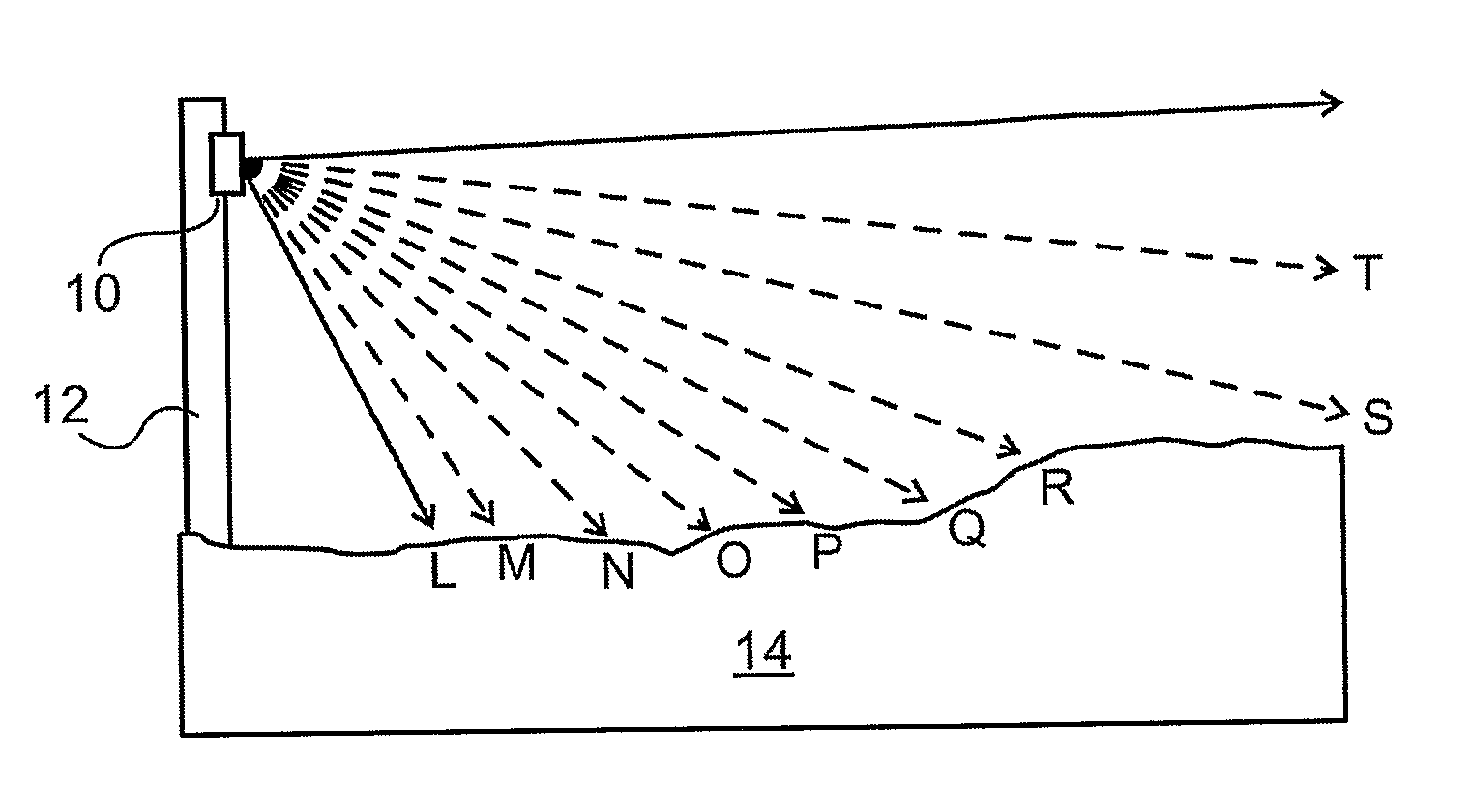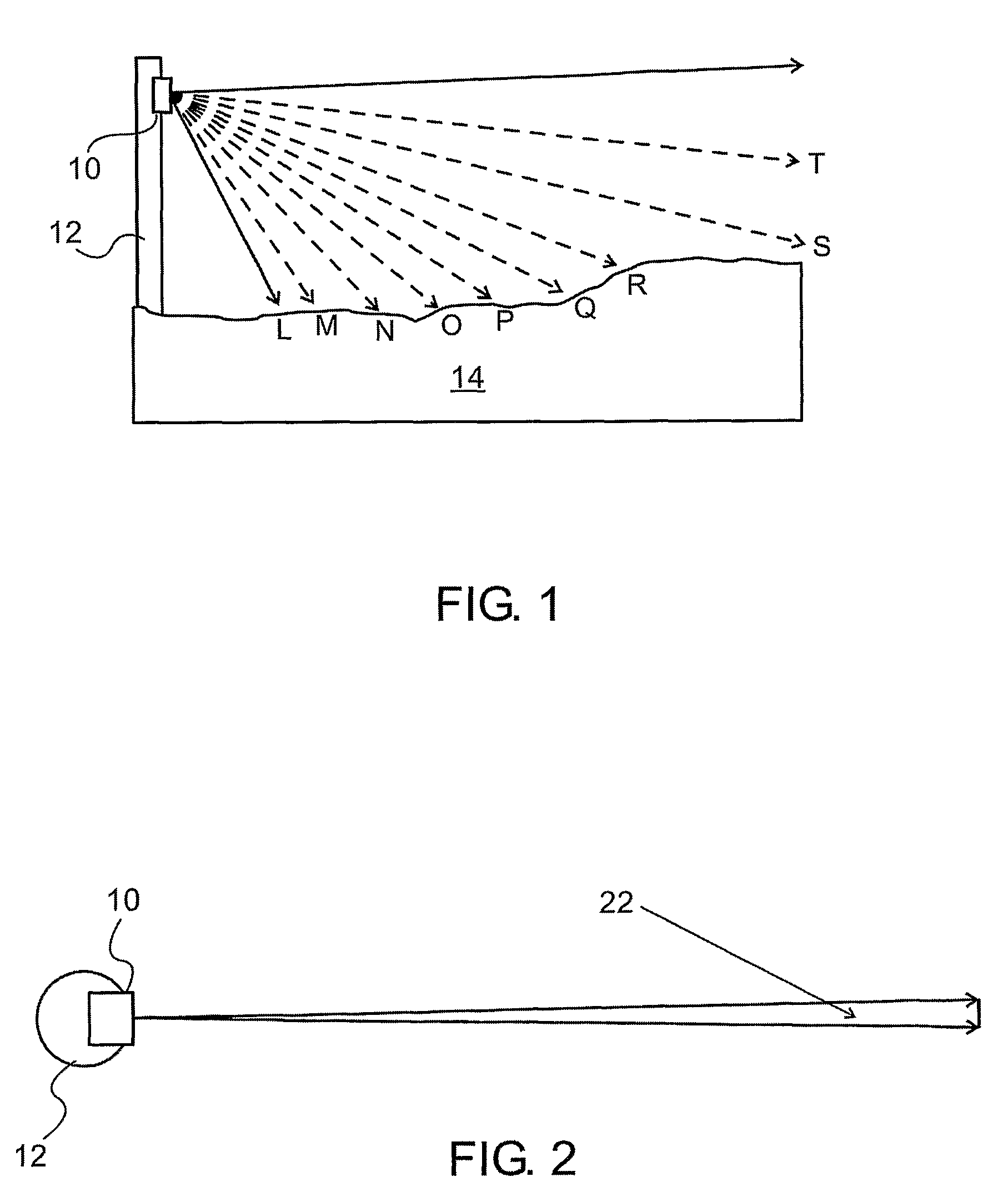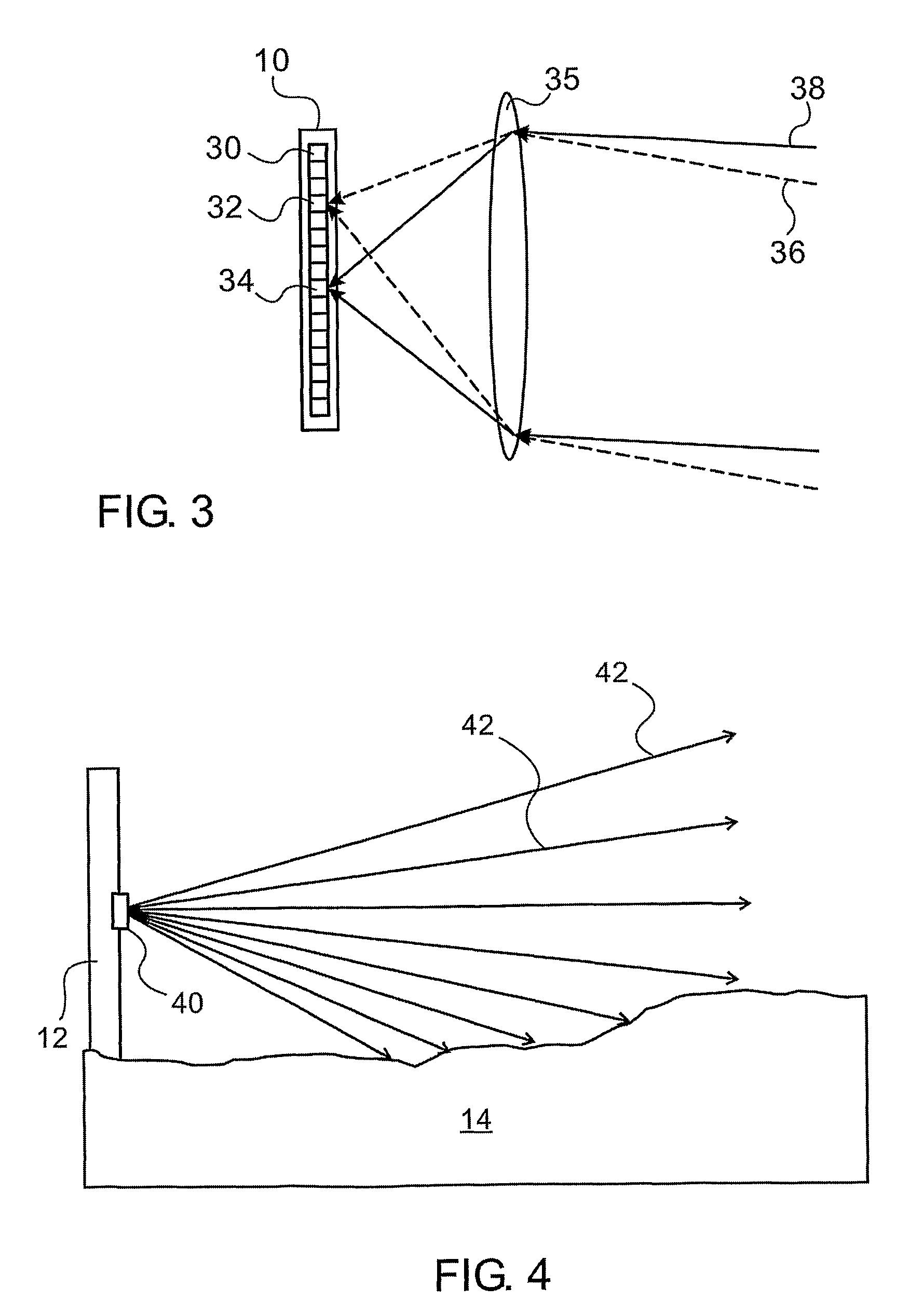Intrusion warning system
a warning system and intrusion technology, applied in the direction of optical radiation measurement, distance measurement, instruments, etc., can solve the problems of limited screening capabilities, limited widespread deployment, and high false alarm ra
- Summary
- Abstract
- Description
- Claims
- Application Information
AI Technical Summary
Benefits of technology
Problems solved by technology
Method used
Image
Examples
Embodiment Construction
[0076]Reference is now made to FIG. 1, which illustrates schematically a side view of the terrain 14 covering configuration of a linear sensor of the type used in the presently described system. The sensor 10 may be suitably mounted on stakes or poles 12, and is positioned such that it looks along the line or border to be secured against intrusion. These stakes can either be support stakes of a real fence, in which case they detect the approach of an intruder at the fence, or they can be simply stakes positioned at regular intervals along the line to be secured, without any intervening physical fence, in which case they constitute a virtual fence. The linear sensor may be mounted essentially vertically, and individual pixels of the sensor are adapted to image different angular field of view directions of the area in front of the sensor, such as by, means of an imaging lens, as will be shown in FIG. 3 below. Each of these different angular directions therefore covers a different zone...
PUM
 Login to View More
Login to View More Abstract
Description
Claims
Application Information
 Login to View More
Login to View More - R&D
- Intellectual Property
- Life Sciences
- Materials
- Tech Scout
- Unparalleled Data Quality
- Higher Quality Content
- 60% Fewer Hallucinations
Browse by: Latest US Patents, China's latest patents, Technical Efficacy Thesaurus, Application Domain, Technology Topic, Popular Technical Reports.
© 2025 PatSnap. All rights reserved.Legal|Privacy policy|Modern Slavery Act Transparency Statement|Sitemap|About US| Contact US: help@patsnap.com



